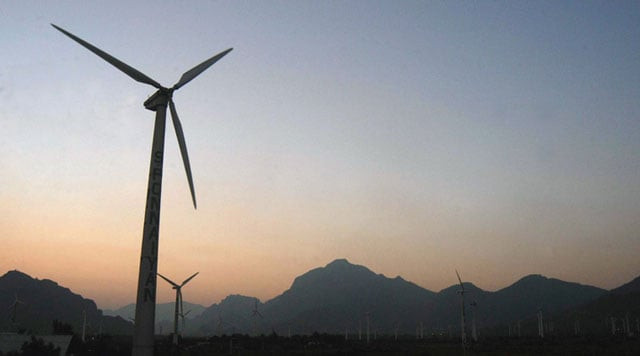‘Green Alliance’ brings clean energy
US envoy says investment will help strengthen Pakistan’s climate resilience

In a significant milestone for Pakistan’s water management and clean energy sectors, the country has attained self-sufficiency through scientific research and studies. The US-Pakistan Center for Advanced Studies in Water (USPCAS-W), established at Mehran University of Engineering and Technology in Jamshoro nine years ago with USAID funding, has successfully delivered clean water energy solutions and contributed to socio-economic assessments of multiple dams. Under the US-Pakistan ‘Green Alliance’ framework, the USAID has also provided funding for the establishment of power grid stations in Jhimpir, Sindh.
One of these stations has the capacity to transmit nearly half of the total 1,700 megawatts (MW) of wind power generated in the country’s power corridor to the national grid station. Additionally, a 50MW wind power project in the same vicinity has received financial backing from the USAID. During his visit to the water and power project sites, US Ambassador to Pakistan Donald Blome underscored the significance of the US-Pakistan ‘Green Alliance’ framework and emphasised the strengthened bilateral partnership between the two countries.
He said, “This trip is a chance to see and highlight US investment in the region, and how it is focused on supporting Pakistan as it strengthens climate resilience, pursues energy transformation, and fosters inclusive economic growth. The ‘Green Alliance’ framework is helping us jointly meet the climate, energy, water, and economic needs of the present and future.” The Vice-Chancellor of Mehran University of Engineering and Technology, Professor Dr Tauha Hussain Ali, welcomed the firstever visit of the US ambassador in the university’s 60-year history and highlighted the recognition of the Center for Advanced Studies in Water as a national water center.
The center’s six laboratories provide analytical and consultancy services to various entities, including government departments, NGOs, and public and private organisations in sectors such as irrigation, public health engineering, textiles, fisheries, and sugar industries. Their expertise has been particularly crucial during the floods in 2022, where they prepared inundation maps through numerical modeling and GIS, said Ali. Moreover, there is hope that the center will be assigned the task of conducting socio-economic assessments for the proposed Sindh Barrage, which is set to be constructed near Kotri Barrage on the River Indus. Experts emphasised the need for a comprehensive flood management plan to mitigate water and climate challenges and prevent future disasters. Under the exchange program facilitated by the US-Pakistan partnership, over 169 individuals have visited universities in the United States, and 70 students are currently enrolled in PhD and post-doctorate programs at the University of Utah, USA, and the water center in Jamshoro.
In 2014, USAID initiated a fiveyear, $12 million cooperative agreement with Mehran University of Engineering and Technology established CAS-W, while another cooperative agreement of the same duration and a value of $10 million was signed with the University of Utah to enhance institutional capacity. Additionally, USAID fully funded the construction of a new three-story facility for the water center with a budget of $5 million. The NTDC 220KV Grid Station AM (S) Jhimpir-1, which serves as a vital transmission hub for wind power projects in the area, has 19 connected wind power projects with an installed capacity to transmit 780MW of power to the national grid station. Since its operation commenced in August 2018, the project has received $43 million in funding from USAID. The Jhimpir wind corridor, where a total of 38 wind power projects exist, has a combined installed power production capacity of 1,700 MW.
However, the actual power production and transmission depend on the wind speed in the corridor. USAID has further contributed $43 million to the National Transmission and Dispatch Company (NTDC) for the construction of transmission infrastructure in the Jhimpir wind corridor. The wind corridor in Sindh has the potential to generate a staggering 50,000 MW of wind power, it was learnt. During the ambassador’s visit, Hawa Energy Limited also showcased its 50MW wind power project in the vicinity. With 29 turbines installed, the company demonstrated its operational capacity, with 28 turbines actively contributing to power production. This project received a substantial $100 million investment from the Development Finance Corporation (DFC) in 2013.



















COMMENTS
Comments are moderated and generally will be posted if they are on-topic and not abusive.
For more information, please see our Comments FAQ